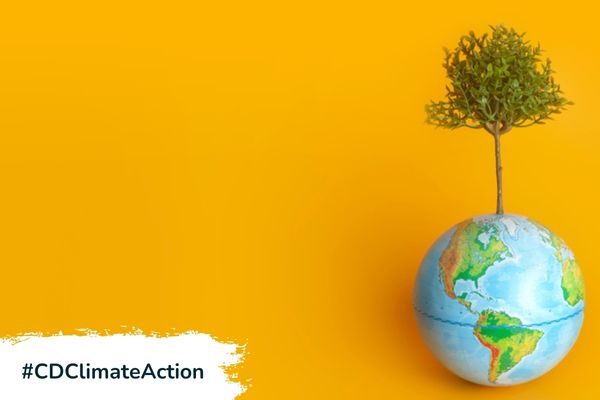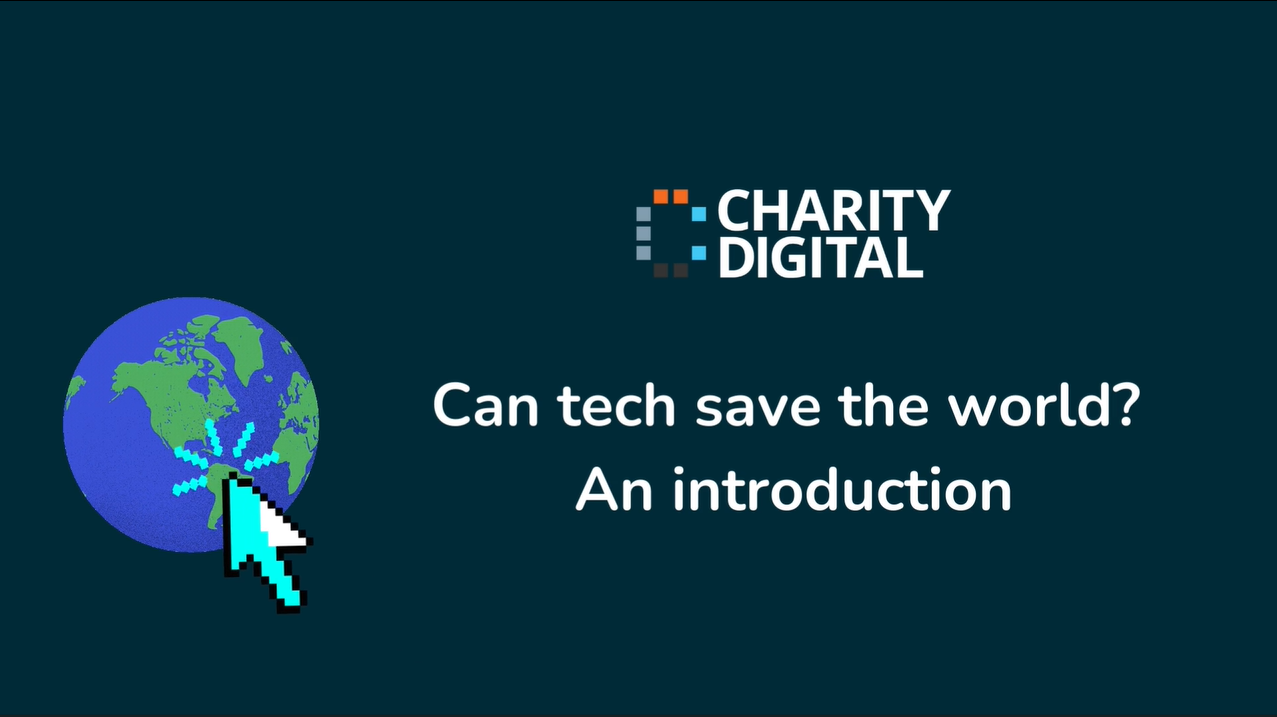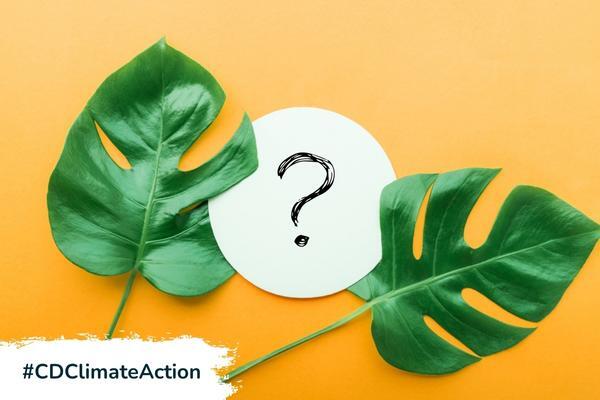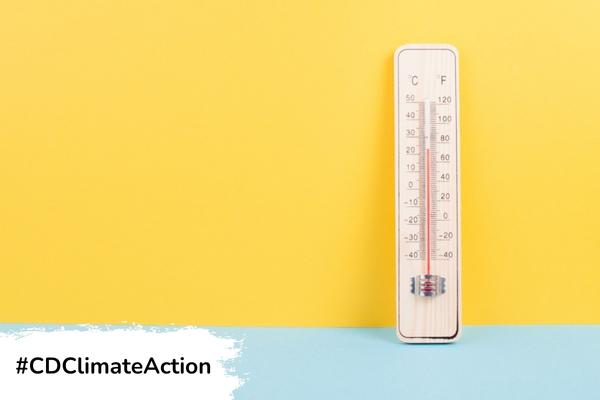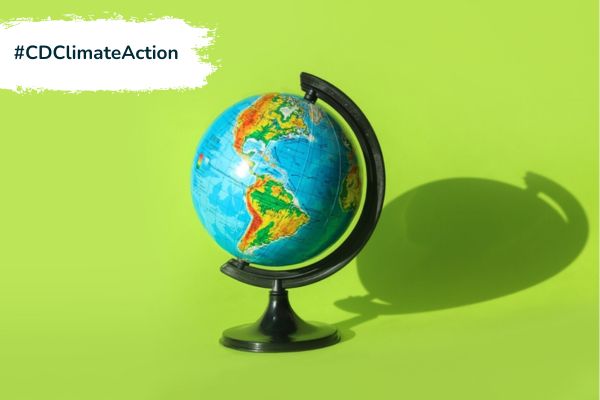Insights
INSIGHTS
All Topics
My Account
The evolving definitions of climate change
01 Feb 2023by Josie Sparling
What is the difference between climate change and global warming? What controversial history lies behind the phrase “carbon footprint”? And what does the enigmatic term “sustainability” actually mean?
CHECK OUT THE ’CLIMATE ACTION’ HUB!
Knowing the origins and debates around these terms can help us to understand our current context and equip us to speak with accuracy and purpose about our changing climate.
Here we explore how climate change definitions have formed and shifted over time, helping to clarify the science, and pointing to some of the other key themes surrounding the topic today.
Skip to: Dangerous climate change
Skip to: Sustainable development
Climate change
The first recorded use of the term “climate change” is in an American scientific periodical in 1854. The authors of the article observed that many European countries were experiencing milder winters than normal.
Although the authors attributed this to “the changeable position of the magnetic poles”, an evolution of scientific understanding over the next century and a half linked changes in the climate to human emissions of greenhouse gases, and climate change entered the mainstream public awareness.
The use of the term “climate change” has increased considerably since its original use in 1854, particularly spiking in recent decades.
“Climate change” now refers to “a pattern of change affecting global or regional climate.” Examples of how this can be measured include looking at average temperature and rainfall over time or observing an alteration in the frequency of extreme weather conditions.
This variation can be caused by both natural processes and human activity, but the Intergovernmental Panel on Climate Change (IPCC) has stated that “the dominant role of humans in driving recent climate change is clear”.
Dangerous climate change
This term was coined in 1992 by the UN Framework Convention on Climate Change. The term refers to “severe climate change that will have a negative effect on societies, economies, and the environment as a whole”.
Climate emergency
Climate emergency refers to “the increasing risk of hazardous, irreversible changes to the climate, resulting from global warming”. It also refers to “the environmental crisis arising from this risk, which requires urgent action to avoid damage to human and environmental welfare”.
The earliest known use of the term was in 1975, then referring to the local effects of deforestation (“We have allowed our trees to be bulldozed until a…climate emergency [has arisen]”).
The term “climate emergency” has more recently been associated with activists asking their governments to acknowledge the urgent conditions of the climate: in December 2022, 2,309 jurisdictions in 40 countries had declared a climate emergency.
It was Oxford Languages’ Word of the Year in 2019, and statistics show a spike in its usage during that year. Institutions such as the Guardian have prescribed the word within their editorial policy in order to communicate urgency to readers.
Climate crisis
Similar to “climate emergency”, the term is increasingly being used in preference to “climate change”. The term “climate crisis” is prescribed in the Guardian and Observer Style Guide to “accurately reflect the seriousness of the overall situation”.
Research suggests, however, that using the phrases “climate emergency” and “climate crisis” has minimal effects on altering people’s emotions, their support for climate policy, or their belief that action could make a difference.
Lauren Feldmen, a professor of media studies at Rutgers University and co-author of the research, suggests that journalists and climate activists should focus on the subject of their writing rather than getting hung up on this debate.
She argues that we should emphasise taking action and finding solutions in the stories we tell, as this will encourage hope among readerships.
Ozone layer
The physicist Jonathan Shanklin was the first to discover that the amount of ozone in the atmosphere had declined over time. Going through historic records, he found that since the late 1970s there had been a systemic decline in the amount of spring ozone.
He published a paper about these findings in May 1985 to “considerable shock around the world”.
An independent team of scientists investigated this and found an ozone hole of 7.7 million square miles.
Researchers soon linked the hole to the production of chemicals called Chlorofluorocarbons (CFCs), which are often used in aerosol cans and cooling devices such as fridges.
In 1987, the Montreal Protocol was signed. This was a global agreement to protect the Earth’s ozone layer by phasing out CFCs.
The ozone hole reached its largest size in 2000 and has since stopped increasing in size, which can be attributed to the measures of the Montreal Protocol.
Today, UNEP describes the success of the agreement: “The Protocol has successfully met its objectives thus far and continues to safeguard the ozone layer today. Thanks to the collaborative effort of nations around the world, the ozone layer is well on its way to recovery.”
In January 2023, a scientific assessment backed by the UN has found that the ozone layer is “on track” to fully recover by 2066.
Global warming
Global warming is one part of climate change. The term describes “the steady rise in global average temperature in recent decades, which experts believe is largely caused by man-made greenhouse gas emissions”.
The term “climate change” encompasses all changes to the climate, including both those caused by humans and those that are naturally occurring. “Global warming” on the other hand tends to refer only to the warming that is caused by humans due to rapid increase in carbon dioxide and other greenhouse gases.
The term “global warming” was first used scientifically in 1975 by the geochemist Wallace Smith Broeker in his report ‘Climatic Change: Are We on the Brink of a Pronounced Global Warming?’.
The report stated that early in the twenty-first century, a rise in atmospheric carbon dioxide content will drive the average temperature of the planet higher than had been experienced within the past 1,000 years. The warming curve that we have experienced since then has “correlated well” with his projections.
A 2018 IPCC special report found that “human activities are estimated to have caused approximately 1.0°C of global warming above pre-industrial levels” and “global warming is likely to reach 1.5°C between 2030 and 2052 if it continues to increase at the current rate”.
It states that “climate-related risks to health, livelihoods, food security, water supply, human security, and economic growth are projected to increase with global warming of 1.5°C and increase further with 2°C”.
Unfortunately, the likelihood that we will reach the 1.5 degree threshold in the next five years is increasing with time (as of May 2022, when the World Meteorological Organisation published its Climate Update).
This is due to the continued emission of greenhouse gases.
The Paris Agreement is the international treaty outlining long-term goals that guide governments towards limiting global warming.
Worldwide google trends analysis reveals that there has been more interest in the term “climate change” than “global warming” over the past twelve months (January to December 2022), with usage varying by country. This could suggest that today, discussions are more centred around the climate changing as a whole than the specific issue of global warming.
Scientists usually prefer to talk about climate change than global warming “because it captures a broader picture of what’s happening – not just hotter temperatures, but also changes in flooding, wind patterns, the oceans, and more”.
Nonetheless, the concept of global warming is key to understanding and mitigating the human causes of climate change.
Greenhouse effect
This term refers to “the insulating effect of certain gases in the atmosphere, which allow solar radiation to warm the earth and then prevent some of the heat from escaping.”
The origins of the term are unclear, but some credit its origins to Swedish scientist Svante Arrhenius who published the first plausible climate model in 1896, explaining how gases in the Earth’s atmosphere trap heat.
In his publication, Arrhenius referred to the “hot-house theory”, which would later be known as the greenhouse effect.
Global heating
The Guardian uses this term instead of “global warming”, stating that it is more scientifically accurate, but the IPCC’s most recent 2022 report continues to use the term “global warming”.
Carbon footprint
The concept of the “ecological footprint” was born in the 1990s, representing our use of Earth’s resources against the ability for Earth to renew those resources.
At the time, this included the use of carbon. But the idea of the carbon footprint itself grew in popularity due to an advertising campaign by multinational oil and gas company British Petroleum (BP) in the early 2000s.
Experts have identified the invention of the term as part of a subtle campaign to shift responsibility of climate change from large corporations onto individuals.
Benjamin Franta, a JD-PhD researcher of law and history of science at Stanford Law School, explains: “The strategy is to put as much blame on the consumer as possible, knowing the consumer is not in a good place to control the situation…It basically ensures that nothing changes.”
Geoffrey Supran, a science historian at Harvard University who investigates the tactics of fossil fuel interests, argues that climate advocates scrap the term, opting for “fossil fuel emissions”, “fossil fuel pollution”, or “fossil fuel footprint” instead.
But the experienced climate communicator Susan Joy Hassol explains that the term can still be used to encourage different types of climate action by individuals, particularly through voting.
Ultimately, this term may be useful in certain circumstances, but it is worthwhile to understand its full context in order to use it with purpose, if at all.
Sustainability
Sustainability can be defined as “the property of being environmentally sustainable; the degree to which a process or enterprise is able to be maintained or continued while avoiding the long-term depletion of natural resources”.
A key moment in our modern understanding of the concept was in 1987, when the United Nations Brundtland Commission used the term “sustainable development” to mean “meeting the needs of the present without compromising the ability of future generations to meet their own needs”.
Sustainability can also be a term used by organisations in relation to their particular environmental impact. The evolution of “green brands” began in the early 1990s, with businesses starting to use their environmental focus as a selling point, and continues today.
This is often associated with the concept of greenwashing: when an organisation, company, or institution falsely conveys its positive impact on the environment.
But the concept of sustainability incorporates every element of society from intergovernmental institutions to individual people. It is about a collective effort to sustain humanity and its environment.
Today, the IPCC defines sustainability as “a dynamic process that guarantees the persistence of natural and human systems in an equitable manner”.
This definition of sustainability involves a constantly changing set of actions that are designed to make sure humans and the natural world can continue to survive, and in a way that is fair and just.
Planetary boundaries
This concept was introduced in 2009 aiming to define the nine environmental thresholds within which humanity can continue to safely develop and thrive.
If the identified boundaries in each of these nine areas are crossed, it indicates that society will be put at risk – and we are already existing outside the safe operating space for at least four out of nine of them: climate change, biodiversity loss, shifts in nutrient cycles, and land-use.
Current solutions include securing indigenous land rights, reforestation, landscape restoration, establishing new protected areas, redesigning food systems, and using finance as a tool.
The planetary boundaries framework has been used to work towards better environmental sustainability in both policy and business contexts. It could also be a useful tool for charities and not-for-profits as a starting point for incorporating climate action.
Sustainable development
The concept of sustainable development has been described as evolving from a “compromise” between economic growth and environmental conservation.
The term was used by the UN Brundtland Report in 1987, defining it as “meeting the needs of the present without compromising the ability of future generations to meet their own needs”.
In 2015, all United Nations Member States came together to develop 17 Sustainable Development Goals: a call for action for all countries to “promote prosperity while protecting the environment”.
These goals include eradicating poverty, achieving global good health and wellbeing, taking climate action, achieving peace, justice, and strong institutions, among others.
A 2017 report found that 39% of UK charities said the sustainable development goals were part of their current strategy.
Sonja Graham, managing partner at Global Action Plan, wrote the same year that more charities should embrace the goals as it enables a more interconnected approach and helps to relate work to “the bigger picture” for charity staff, beneficiaries, and funders.
She also explains that the goals can give charities a framework to become more innovative when pursuing their own missions and remind charities to collaborate in order to achieve shared and compatible goals.
Online resources
In our definitive climate change glossary, we have picked all the essential climate terms and translated them into simple English for your use.
You can also visit our Climate Action Hub and follow our 2023 Climate Action Campaign for more information on how charities can help tackle the climate crisis.
Sign up for our newsletter
Click above to receive the latest sustainability content straight to your inbox
More on this topic
Related Content
Recommended Products
Related Videos
Our Events
Charity Digital Academy
Our courses aim, in just three hours, to enhance soft skills and hard skills, boost your knowledge of finance and artificial intelligence, and supercharge your digital capabilities. Check out some of the incredible options by clicking here.







